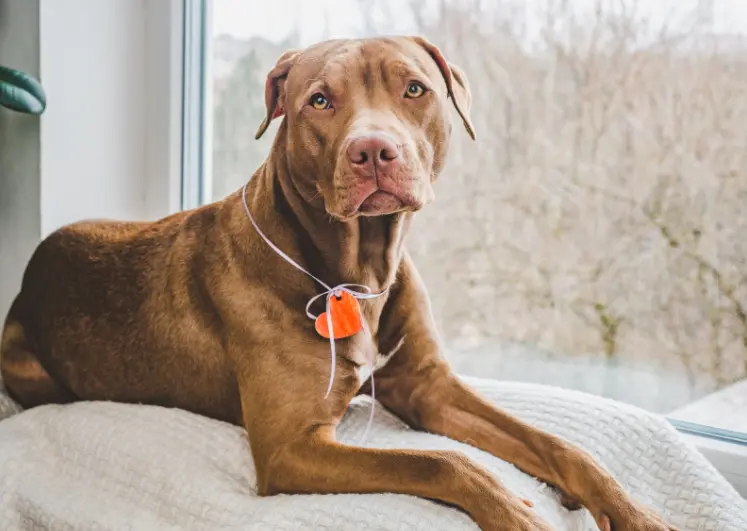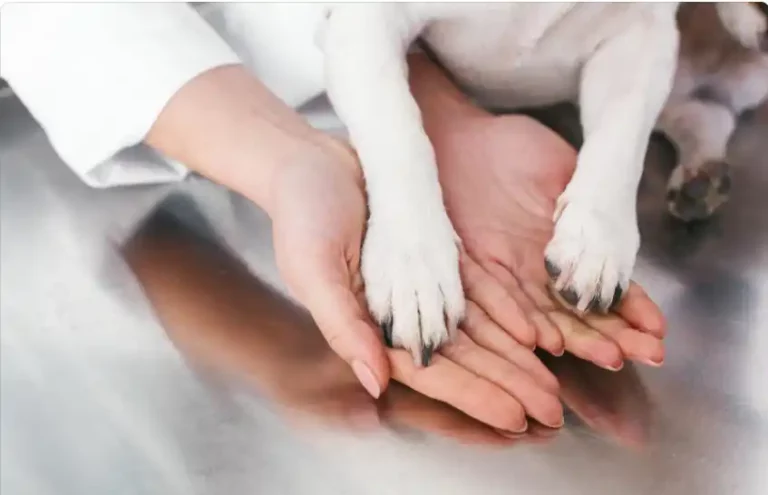The Complexities of Responsible Dog Breeding
Dog breeding is a nuanced practice that requires great care and dedication. The American Kennel Club (AKC), founded in 1884, advises that a responsible breeder’s motto should be “breed to improve.” This means meticulously selecting dogs from healthy lineages with ideal temperaments to propagate those strengths in future generations.
However, according to the ASPCA, pet overpopulation is a mounting crisis; approximately 3.1 million dogs enter U.S. animal shelters annually. With so many homeless dogs, ethical breeders must aim to enhance the breed, not just produce more puppies. The AKC estimates only about 22% of breeders they worked with had that level of expertise in 2019.
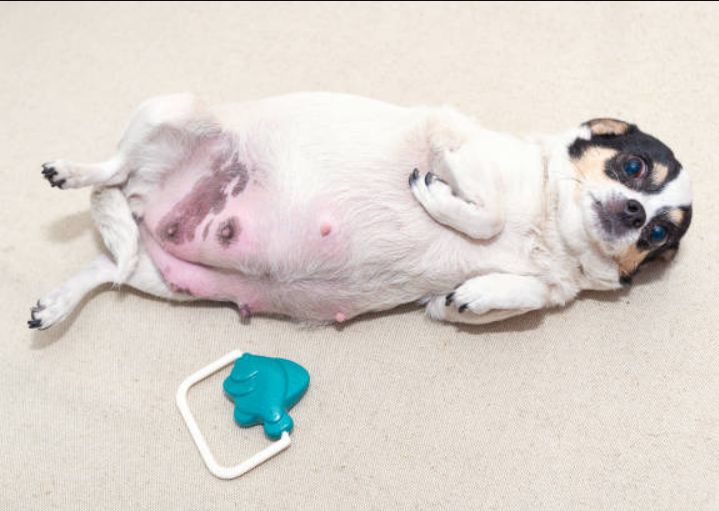
Breeding is far from profitable, often costing thousands in health testing, stud fees, veterinary care, and more. It can also be heartbreaking if complications arise. It requires extensive research and care, not just “throwing two dogs together” randomly. That ignorance produces unhealthy, unstable dogs.
For instance, pre-screening tests for issues like hip dysplasia cost $500+ per dog. A stud fee can be $1000-$5000. Pregnancy and delivery monitoring, vaccines, deworming, and more all add up. Profit is never the motive – improving the breed is. Backyard breeding must stop; we must leave it to the educated few.
Table of Contents
- Should I Breed My Dog? The Ethical Dilemma
- Responsible Dog Breeding
- The Top 5 Things Responsible Dog Breeders Should Do Before Breeding
- Understand Your Dog’s Genetics Before Breeding
- Selecting a Compatible Mate for Your Female
- Conduct Thorough Pre-Breeding Health Screening
- Use a Written Contract to Formalize the Breeding Arrangement
- The Step-by-Step Process of Breeding Dogs
- Standard Breeding Methods and Strategies
- Timing Breedings Around the Female’s Heat Cycle
- Natural Breeding vs. Artificial Insemination
- Canine Pregnancy, Labor, and Delivery
- The 3 Stages of Canine Labor and Delivery
- Recognizing Concerning Signs of Whelping Complications
- Conclusion
Should I Breed My Dog? The Ethical Dilemma
Breeding dogs is not something to be taken lightly. The American Kennel Club estimates only about 22% of breeders in 2019 had the expertise needed to truly better the breed. It is likely not a good candidate if you did not specifically acquire your dog for approved breeding. Reputable breeders thoughtfully select breeding dogs from healthy, stable lineages to propagate those strengths.
A common misconception is that female dogs should have “just one litter” before being spayed. However, dogs do not have any biological drive or fulfillment from mothering offspring like humans do. The mother dog has no physical or mental benefits from having a litter. Pregnancy and birthing can be dangerous – estimates suggest up to 10% of pregnant dogs suffer fatal complications.
Leaving a dog intact also increases the risks of testicular and ovarian cancers later in life, among other health issues. According to the ASPCA, intact female dogs have a 1 in 4 chance of developing deadly pyometra by age 10. Spaying eliminates this risk.
While witnessing the “miracle of birth” may seem appealing, the realities are often messy and heartbreaking if problems arise. The breeder assumes all expenses for pregnancy monitoring, vaccines, deworming, vet care, etc. Any profit from selling the puppies is negligible compared to these costs. There are no guarantees you will even get to keep one of your dog’s offspring.
Instead, leave dog breeding to dedicated professionals devoted to improving their breed. For your beloved pet, spaying or neutering is recommended for population control and their health and well-being.
Responsible Dog Breeding
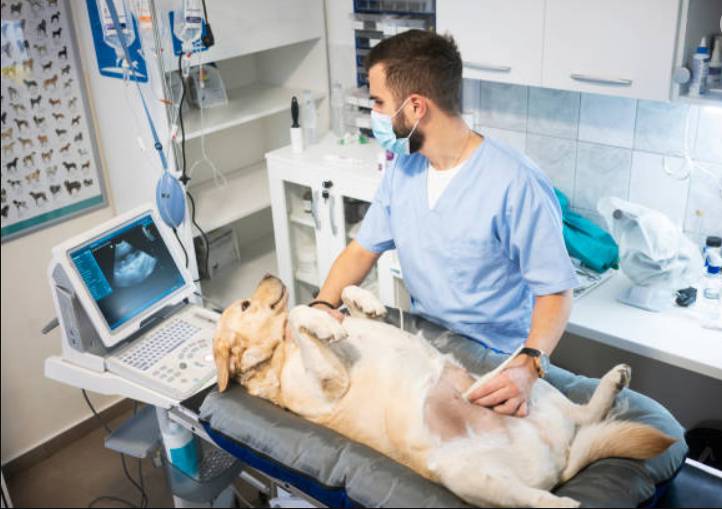
Dog breeding began in the mid-19th century with the establishment of kennel clubs and breed standards. This allowed for the development of specific dog types like hunting dogs, shepherds, and guardians. Dog shows became famous for displaying dogs adhering closely to their breed standards. Over time, some breeds diverged into “working” and “conformation” lines.
Historically, breeding dogs was associated with nobility – Queen Victoria had her Pomeranians, and Queen Elizabeth bred Pembroke Welsh Corgis. Today, ethical breeding is an expensive endeavor requiring extensive knowledge. Animal welfare groups also rightly critique the contribution of irresponsible breeding to overpopulation and shelter dogs.
If undertaking breeding, the first step is outlining your goals. Common objectives include producing dogs for show/conformation, working ability, or health improvements and, for example, correcting the sloped back problem in German Shepherds or the squashed faces of French Bulldogs.
A deep understanding of canine genetics is crucial, as you will make intentional selections about which dogs to pair. You must also become an expert on the breed you intend to work with.
Other considerations include estimated costs for health testing, stud fees, veterinary care, supplies, etc. Breeding dogs is rarely profitable. Being prepared for complications during pregnancy and whelping is also essential, as emergencies can arise.
Overall, breeding is a serious undertaking requiring dedication to improving the breed responsibly. It is not to be attempted lightly without the necessary knowledge and resources. Doing it correctly takes immense commitment.
Dog Breeding Lingo – Key Terms Explained
Bitch – A female dog
Dam – The mother of a litter of puppies
Stud – A male dog used for breeding purposes
Sire – The father of a litter of puppies
First Pick – The right to choose the first puppy from a litter, usually reserved for the stud dog’s owner
Litter – The group of puppies born from the same pregnancy/breeding
Whelp – A newborn puppy
Whelping – The process of a female dog giving birth, also called labor
Whelping Box – An enclosure where the dam gives birth and nurses her puppies in the first few weeks
Water Bag – The amniotic sac filled with fluid that surrounds each puppy in utero and breaks at the start of labor
Heat Cycle – The bitch’s reproductive cycle when she ovulates and can become pregnant, occurring about twice a year
Gestation – The period of pregnancy from fertilization to birth, averaging 63 days in dogs
Tie – Mating interaction where the male dog’s penis swells and remains inside the bitch for up to 30 minutes to ensure impregnation
Familiarity with these terms is essential for anyone involved in dog breeding and whelping. Let me know if you need any clarification on these key definitions!
The Top 5 Things Responsible Dog Breeders Should Do Before Breeding

As of September 3, 2023, there are approximately 90 million pet dogs in the United States. With so many lovable pups already needing homes, prospective dog breeders should think carefully before adding more.
If you’ve decided breeding is suitable for you, here are 5 key steps to take beforehand:
- Research your breed thoroughly. Understand the breed’s history, typical temperament, health issues, exercise needs, etc. Set clear goals for what you want to achieve or preserve in your bloodline.
- Test your breeding dogs for genetic diseases common to the breed, such as hip dysplasia in German Shepherds. Use an accredited vet and document the results.
- Evaluate your dogs’ conformance to the breed standard through show ring competition or expert assessment. Make sure they exemplify the best qualities.
- Budget adequately for health testing, stud fees, veterinary care, supplemental feedings, and medical emergencies during whelping. Breeding and raising puppies is expensive!
- Line up qualified buyers before breeding. Interview families personally and charge an appropriate price. Avoid selling to pet stores or unknown parties.
With meticulous preparation, ethical choices, and a focus on improving the breed, your pups will have the best start in life! Let me know if you want me to elaborate on any process part. Responsible breeding is a big commitment.
Understand Your Dog’s Genetics Before Breeding
Breeding is all about genetics. Everything from common health issues like hip dysplasia to your dog’s temperament and abilities is determined by their lineage.
As of 2023, it’s estimated there are 70 million stray dogs worldwide. Poor breeding practices have also led to many dogs suffering from severe hereditary diseases and conditions.
So, while ethical, selective breeding can improve dog breeds, it must be approached thoughtfully. Some key considerations on genetics:
- Research your dog’s pedigree and any issues that may run in their bloodline. Test breeding candidates for genetic disorders common to the breed.
- Avoid excessive inbreeding, which can concentrate faulty genes. Strive for genetic diversity in pairings.
- Breed selectively for health, temperament, and ability rather than exaggerated physical features that may be detrimental.
- Understand breed predispositions and not breed dogs prone to aggression or severe health problems.
In a world with many dogs needing homes, prospective breeders must ensure they act ethically and improve the breed. Learn your dog’s genetics inside and out before breeding. Done right, it can better the breed; done poorly, and it perpetuates suffering.
Carefully Consider the Breed or Mix You Want to Produce
Reputable breeders often focus on just one or two breeds they have extensive knowledge of and passion for. Meanwhile, others deliberately create mixed breeds or “designer dogs” like Labradoodles to meet consumer demand.
However, not all mixes have predictable traits or broad appeal, making them difficult to home. Before breeding:
- Research the breed or mix thoroughly. Understand their temperament, exercise needs, grooming requirements, and health issues. Ensure there is demand for what you’ll produce.
- For purebreds, choose a breeding quality female that closely matches the breed standard. Purchase from a reputable breeder. Costs often start around $2,000.
- For mixes, carefully select complementary purebreds that are health and temperament-tested.
- Wait until dogs are physically and mentally mature before breeding. The AKC doesn’t accept registrations from dams under 8 months old or over 12 years old. Many experts recommend waiting until 2 years old.
- Realistically assess the expenses involved – health testing, stud fees, veterinary bills, extra food, supplies, etc. Breeding is not a money-making venture initially.
- Ensure you have the time, facilities, knowledge, and commitment to raise puppies properly. It’s a major undertaking!
Breeding dogs is not something to take lightly. Much careful forethought is needed to do it ethically and successfully. Be honest with yourself about whether you are ready for this responsibility!
Selecting a Compatible Mate for Your Female
Once you have a breeding-quality female, choosing the right stud is crucial. Analyze your female’s strengths and weaknesses. Identify traits you want to improve in her offspring. Search for a stud that complements your female. He should enhance her weaknesses without introducing new ones.
- The stud should fall within the AKC accepted breeding age range of 7 months to 12 years old.
- Meet the potential stud in person to evaluate temperament. He should be confident but not aggressive. Extreme shyness is also unacceptable.
- Thoroughly research the stud’s pedigree for several generations. Look for champion titles and watch for any genetic disorders that could be passed down.
- Require health screening documentation on the stud, including tests for breed-specific conditions.
- If using a stud service, review sample contracts. Be prepared for stud fees ranging from $500-$3000 or more.
By thoughtfully selecting a mate that balances out your female’s attributes, you can produce healthy, temperamentally sound puppies true to the breed standard. Never compromise on temperament or health in your quest for specific physical traits. Take your time researching to find the ideal pairing.
Conduct Thorough Pre-Breeding Health Screening
Performing health tests on your breeding dogs is crucial to reducing the risk of hereditary conditions in puppies.

- Understand how diseases are inherited. Dominant disorders only require one copy of the gene from either parent. Recessive diseases need two copies, so carriers may seem healthy. Polygenic disorders result from multiple genes interacting.
- Research common conditions for your breed and the recommended screening tests. For example, test Labradors for hip and elbow dysplasia, eye issues, and exercise-induced collapse.
- Use an accredited veterinary clinic to perform the health screens. Document the results for both sire and dam.
- Testing can be expensive ($500+ per dog), but it’s worth preventing suffering. Some issues like hip dysplasia can’t be detected through physical exams alone.
- Consider testing for genetic diversity as well. Breeding closely related dogs risks concentrating faulty genes.
While no breeding is 100% risk-free, advanced health screening allows breeders to make informed choices for minimizing heritable diseases. Testing both parents provides vital insight into potential weak points. Other goals like appearance should never override a commitment to health.
Use a Written Contract to Formalize the Breeding Arrangement
Once you’ve selected a suitable stud for your female, it’s essential to formalize the breeding agreement in writing. A contract protects both parties by clarifying expectations.
- Decide on financial terms – stud fee, travel expenses if required, deposit amount, etc. Average stud fees range from $500-$2,000.
- Specify if the stud owner will receive a puppy from the litter as compensation. If so, determine the selection order and age at pickup.
- Outline breeding dates, veterinary certificates required, and breeding/whelping location.
- Identify the registration body and detail how litter will be registered and pedigrees maintained.
- Indicate who is financially responsible should veterinary care be required for studs, dams, or puppies.
- Include contact information, dates, and signatures of all owners.
While verbal agreements are tempting between friends, they often result in misunderstandings. Protect your investment and set clear terms through a complete written contract upfront. This ensures the best outcome for all parties – especially the puppies!
The Step-by-Step Process of Breeding Dogs
Once the process starts of breeding dogs, you need to take care of female dogs properly. When your female dog enters her first heat cycle (usually around 6-10 months old), she can get pregnant.

Here is an overview of the breeding process:
- The dam and sire are introduced and allowed to interact comfortably. The female indicates readiness by “flagging” – standing still with her tail angled to the side.
- The male mounts when accepted, and intromission occurs. This involves penetration and ejaculation of semen into the female’s reproductive tract.
- Upon ejaculation, the male’s bulbus glandis swells to “tie” him to the female for 5-30 minutes. This ensures semen remains inside. Do not forcefully separate a tie, as it can cause injury.
- Once the tie is complete, the male dismounts. The swollen bulbus glandis prevents semen from escaping the female’s vagina. This increases the chances of conception.
- Fertilization happens within the female’s oviducts over the next day. Pregnancy lasts ~9 weeks in dogs. Schedule a vet exam to confirm.
- To maximize litter size and health, breed every 1-2 days during the 2-4 week heat period. Track cycles carefully to properly time matings.
Following these natural breeding instincts while providing medical oversight helps produce healthy litters. Let me know if you need any clarification on the biological processes involved!
Standard Breeding Methods and Strategies
Breeders use various structured approaches to try to achieve their goals:
- Linebreeding – Breeding moderately related dogs, such as grandparent/grandchild or aunt/nephew. It aims to solidify desirable traits while managing inbreeding.
- Inbreeding – Breeding of very close relatives, like father/daughter or brother/sister. It can rapidly amplify traits but also defects, so great care must be taken and generally avoided today.
- Outcrossing – Breeding of two unrelated individuals of the same breed. It introduces genetic diversity and can mask flaws.
- Outbreeding – Crossing two different breeds. It is used to create hybrid vigor but can also be unpredictable.
- Backbreeding – Repeatedly breeding a stud back to his best daughter(s) to solidify his traits. Risks perpetuate flaws, so health screening is critical.
- Grading Up – Breeding an exceptional stud to more average females. It can improve breed quality while being more cost-effective.
If breeding, be very selective and emphasize health. Overuse of linebreeding or backbreeding can propagate inherited disorders. Seek professional guidance to employ this method responsibly. Outcrossing is the safest for genetic diversity.
Timing Breedings Around the Female’s Heat Cycle
Depending on the breed, the first heat cycle occurs between 6-24 months. Small dogs tend to cycle earlier. Heats recur every 6-8 months. The cycle lasts 18-21 days. Ovulation happens around days 10-15. Many experts advise skipping the first 1-2 heats to allow for maturity. But this can be decided between the breeder and vet.
- Back-to-back breeding on each heat is possible but can be taxing. Assess the size of the last litter and the dam’s condition first.
- Overbreeding depletes calcium reserves and increases the risk of complications. Limit to no more than 2 liters per year, with rest between.
- Schedule breedings during the optimal fertility window halfway through heat. Track cycles closely and confirm ovulation with progesterone testing.
- Let the male and female interact freely to allow natural timing. Never force matings.
Following the female’s cycles and mating only during peak fertility improves litter size and health. Work closely with your vet to determine a healthy breeding schedule for the dam.
The 4 Stages of the Female Dog’s Estrous Cycle
Understanding the estrous cycle is key for successful breeding. Here are the 4 phases.
- Proestrus – The beginning of heat, lasting 5-10 days. The female attracts males but will not allow breeding. Look for vulvar swelling and bloody discharge.
- Estrus – The fertile period when ovulation occurs, lasting ~9 days. The female is receptive to the male and will allow mounting/breeding. Ovulation happens in the first 48 hours.
- Diestrus – ~60-90 days gestation or pseudo-pregnancy after ovulation. Progesterone dominates. An actual pregnancy will last ~63 days before whelping.
- Anestrus – 2-3 months of reproductive rest between cycles. Sex hormones are minimal during this resting phase.
The optimal breeding window is during estrus once ovulation is confirmed via progesterone testing. Fresh semen lives for 4-6 days, frozen for <=48 hours. Careful cycle tracking is key for timing matings appropriately.
Natural Breeding vs. Artificial Insemination

There are two main approaches to physically achieving a mating:
- Natural breeding – Allowing the male and female to copulate naturally. The female is brought to the male’s territory when in heat. Some breeder assistance may be needed to facilitate mating.
- Artificial insemination (AI) – Semen is collected from the stud, then surgically implanted into the female’s uterus when ovulating. They are used if natural breeding is difficult or with frozen semen.
For natural mating
- Introduce the pair on neutral territory first. Monitor for signs of aggression.
- Supervise all interactions. Provide assistance if needed for mounting. Never force mating.
- Schedule breedings during peak fertility for best conception rates.
For Artificial Insemination (AI)
- Semen is collected manually from the stud or shipped frozen. It must be surgically inseminated when the female ovulates.
- Requires progesterone testing to identify ovulation window. Performed by a vet under sedation.
- Special registration may be necessary for AI litters. Verify with your kennel club.
When performed correctly under veterinary guidance, both methods can produce healthy litters. The choice depends on your circumstances and comfort level.
Pre-Breeding Health Screening and Preparation
Thorough preparation is crucial before breeding dogs:
- Have both sire and dam undergo comprehensive veterinary health checks 1 month before intended breeding. Confirm they are free of infectious diseases and genetic disorders common to the breed.
- Verify all vaccinations are current, including rabies, parvo, and distemper. Deworming should also be up to date.
- Evaluate temperament objectively. Look for signs of shyness, instability, or aggression. Only breed dogs with sound, stable temperaments.
- Assess conformance to breed standards. Faulty structure or extreme features may cause whelping issues.
- X-ray hips and elbows for signs of dysplasia, even if no symptoms present. Document results.
- Discuss any supplements that may help optimize the fertility and health of the litter with your vet.
Leaving nothing to chance with health clearances and preparation helps prepare the pups for an ideal start. A responsible breeder thoroughly vets both sire and dam before allowing mating.
Canine Pregnancy, Labor, and Delivery
Once breeding is successful, pregnancy lasts approximately 63 days. Here’s what to expect:
- Schedule a vet visit around 28-30 to confirm pregnancy via ultrasound and exam. Count down to the expected due date.
- Enlarge the dam’s meals as the due date nears to support caloric needs. Provide premium puppy food and nutritional supplements.
- Prepare a designated whelping area with warm bedding, supplies, and temperature control. Monitor the dam for nesting behavior.
- Natural labor may take 6-12 hours. Contact your vet if straining exceeds 30 minutes with no pup.
- Certain breeds, like Chihuahuas and Pugs, often require c-sections due to puppy size relative to the pelvic canal. Plan accordingly.
- Puppies nurse every 1-2 hours initially. Weigh daily to ensure all are getting milk. Supplement if needed.
With close veterinary supervision, an attentive breeder, and a well-prepared whelping area, dams can safely deliver healthy litters. Be alert for complications requiring medical intervention.
Caring for the Pregnant Dam and Preparing for Whelping
A canine pregnancy lasts 58-63 days on average. Here are some tips for caring for the expecting mother:
- Look for early signs of pregnancy at 3-4 weeks, like swollen nipples and weight gain. Have your vet confirm via abdominal palpation after week 4.
- Gradually increase the dam’s high-quality food by 25-50% over baseline as the due date nears to account for the nutritional demands of pregnancy.
- Split meals into smaller, more frequent portions. Free-choice feeding also works well. Make sure fresh water is always available.
- Supplement with calcium, omega fatty acids, and other nutrients starting in weeks 5-6, as your vet recommends, to support fetal development and milk production.
- Have an x-ray done in weeks 7-8 to count puppies if desired. Wait until bones have calcified to get an accurate count.
- Prepare a dedicated whelping area with nesting boxes, heating pads, and easy-to-clean flooring 1-2 weeks beforehand. Gather all necessary supplies.
With the proper diet and care from an attentive breeder, dams can have happy and healthy pregnancies. Close vet supervision is key, especially if it is her first litter.
Preparing the Whelping Area for a Clean and Safe Delivery
Set up the whelping area in a quiet, draft-free room 1-2 weeks before the due date. The mom needs time to get comfortable in the space. Whelping boxes should have ample room for the dam to lie down and give birth comfortably. Add rails/edges to prevent crushing puppies.
- Line the bottom with easy-to-replace materials like newspapers or puppy pads. Have clean blankets ready to swap in after birthing.
- Maintain room temperature at 70-80°F. Place heating pads under part of the bedding to create a warmer area the puppies can crawl to.
- Gather all necessary supplies in advance: umbilical tape, scissors, towels, thermometer, scale, feeding tubes/bottles, etc. Arrange clearly.
- Disinfect and puppy-proof the area. Remove any hazards. Set up a camera to monitor from afar.
- When labor begins, provide quiet privacy but stay within earshot if intervention is needed.
Preparation creates an optimal birthing environment to welcome puppies. Having supplies neatly on hand also makes caring for the newborns easier post-whelping.
Recognizing the Signs of Impending Labor
As your dam nears delivery, watch for these common signs that labor will start soon:
- Nesting behavior – Digging/scratching at bedding to create a nest
- Loss of appetite – Refusing food in the last 24 hours
- Drop in body temperature – Below 100°F indicates labor will begin within 24 hours
- Restlessness – Pacing, unable to get comfortable
- Vulvar discharge – Bloody mucus discharge called “show.”
- Mammary enlargement – Milk production starting
- Licking vulva frequently
Once contractions begin, contact your vet if:
- Over 2 hours of solid contractions without a puppy appearing
- More than 4 hours of labor total for a large litter
- Over 30 minutes of straining per pup without progress
Stay within earshot to intervene if labor stops progressing normally. Have emergency numbers handy, just in case.
The 3 Stages of Canine Labor and Delivery
Normal canine labor progresses through 3 distinct stages:
Stage 1 – Early Labor
- Lasts 6-12 hours as uterine contractions begin but are not yet productive
- Dam exhibits nesting behavior and appetite loss as the body prepares
Stage 2 – Active Labor & Delivery
- Strong, productive contractions every 5-30 minutes, each lasting 30-60 seconds
- Puppies are delivered one by one, ideally no more than 2 hours between each
- Count placentas; call the vet if retained. Puppies begin nursing immediately.
Stage 3 – Passage of Placentas
- Expulsion of placentas follows shortly after each puppy
- Labor is complete when all pups and placentas are delivered
- Dam should pass no more than two placentas orally. Discard any extras discretely.
Monitor labor closely and document the timing of each puppy. Contact your vet promptly if >2 hours between pups or active pushing >30 minutes without a puppy appearing. Keep emergency vet numbers handy in case a C-section becomes necessary.
Recognizing Concerning Signs of Whelping Complications
While many dams whelp normally, contact your vet promptly if you notice any of these red flags:
- Green/bloody discharge before the first puppy – Could indicate placental abruption
- Over 2 hours between puppies – Uterine inertia; may need medical intervention
- Active labor over 12 hours total – Suspect obstruction, requiring c-section
- Hard straining >30 mins per pup – Likely obstruction; immediate vet assistance needed
- Total labor >64 days post-breeding – Seek evaluation to determine the cause
- Lethargy, fever, foul discharge after whelping – Possible metritis or mastitis
- Trembling, collapse during labor – Emergency; possible eclampsia
Prepared breeders know when to request veterinary assistance. Don’t delay if complications arise – prompt treatment greatly improves outcomes for dams and puppies.
Have your vet’s emergency contact handy.
Can You Leave Newborn Puppies Alone With Their Mom? [Vet Advice]
www.puppiesdiary.com
Conclusion
Dog breeding is responsible work, and you should know about puppy breeding.
Selecting a breed is challenging, and you need to focus on their Genatic pools.
It would be best to properly care for female dog and newborn puppies without neglecting their lives.

![How Can I Treat My Dog's Dislocated Leg? [Best Vet Advice] 7 How Can I Treat My Dog’s Dislocated Leg? [Best Vet Advice]](https://www.puppiesdiary.com/wp-content/uploads/2023/03/How-Can-I-Treat-My-Dogs-Dislocated-Leg-768x487.webp)
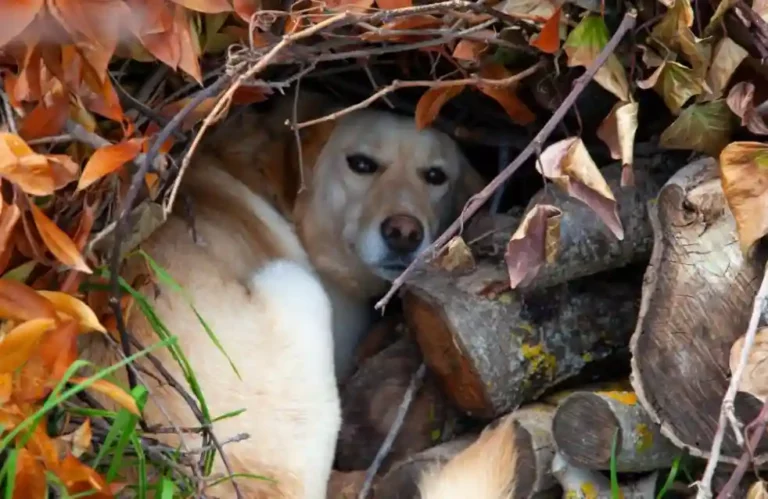
![Can You Wash Your Pet With Laundry Detergent [Read Vet advice] 9 Can You Wash Your Pet With Laundry Detergent [Read Vet advice]](https://www.puppiesdiary.com/wp-content/uploads/2023/01/Can-You-Wash-Your-Pet-With-Laundry-Detergent.webp)

